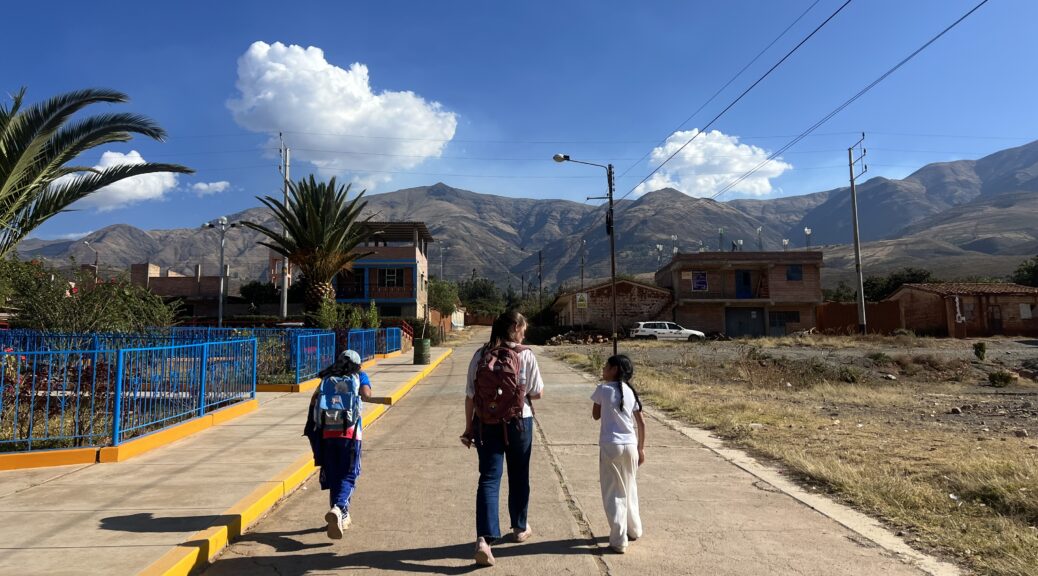
After 1 year in Ancash, hindsight is 20/20 going into 2025.
Welp, December 5 marked 1 year since moving to Pueblo Libre, a small, beautiful, cozy town nestled in the Cordillera Negra (Black Mountain Range) of Peru’s Ancash region. My time here has been speckled with accomplishments, failures, projects that fell through and others that I’m excited to continue into year 2. Over the last year I’ve met countless individuals, many of which will stay in my mind for the rest of time: students, teachers, psychologists, medical professionals, abuelos, abuelas, taxi drivers, store owners, dogs, cats, my host family. The beauty of Peace Corps is that it’s a 2-year commitment. While that may seem long to some, it is a blip in my (hopefully) long lifetime. And I’m sure by the end of it I will feel both ready and distraught to leave. I will feel accomplished in the things I did and unfulfilled in the things I didn’t. As I look back on the past year, and forward into the next, it is an opportunity to make the most of the time I have left. So, this post is dedicated to the do’s, the don’t’s, the greats, the failures, and the what’s to come. (lock in, this post is half informing the reader and half wrapping my head around my thoughts)
To be honest, it would be very easy to say that in my first 5-6 months in Pueblo Libre, I did nothing. I remember feeling like a lost puppy. No one is telling me where to go, what to do, school was out of session until mid-March. Pretty much every morning I woke up and thought “I could stay in bed all day and no one would say a thing.” And then I would think “Yeah, but I would hate myself.” So, I got up.
One thing a previous Peace Corps volunteer said to me, that I will never forget, is that service is a balance. While on some days, work may not go as planned, maybe your relationship with the host family is thriving. And maybe, when that relationship feels a bit distant, your work is thriving. There are plenty of other pieces in the balancing act, but the point is that there’s always something that is moving slow, and something else that is going great. Before diving into a rant of my downfalls, one thing that I am so proud of is the reputation I’ve made for myself in town. I’m the first “gringa” to ever live here. And I’ve proven time and time again that I am invested in learning Quechua, I love huayno (traditional Andean dance), I’ll eat any and everything put in front of me, from guinea pig to intestines, and I can hang with the old dudes in the drinking circle. In the end, if the old neighbor or the pregnant mother doesn’t remember what I did in the health post, at least they’ll remember my moves on the dance floor. Arguably more important.
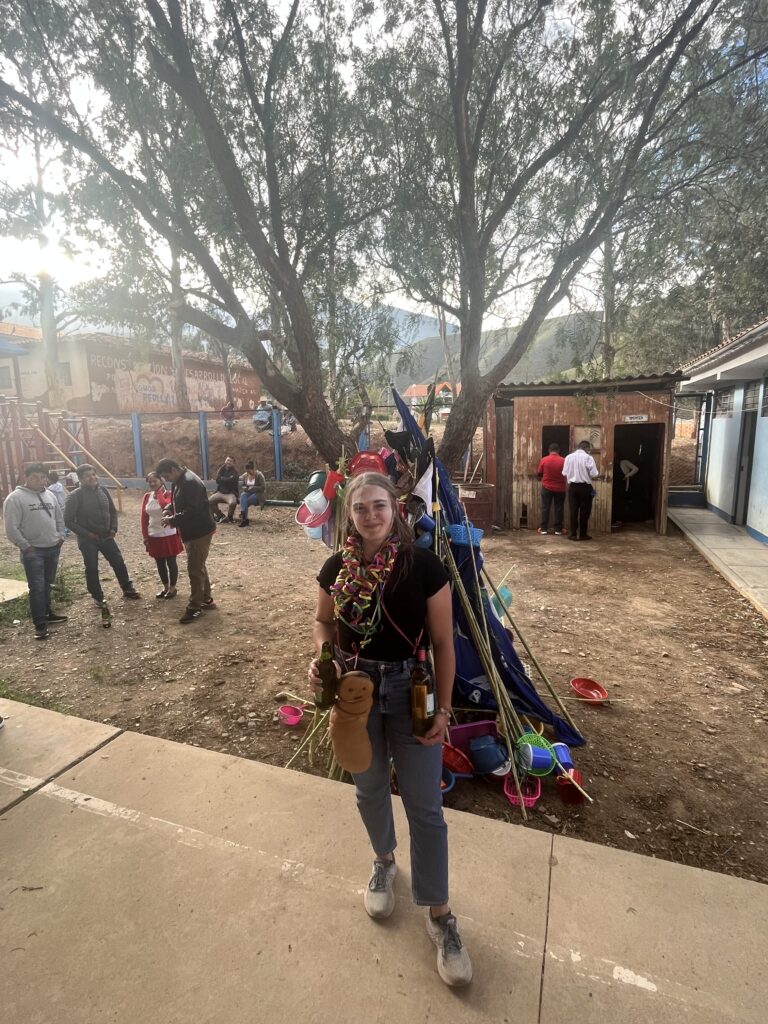
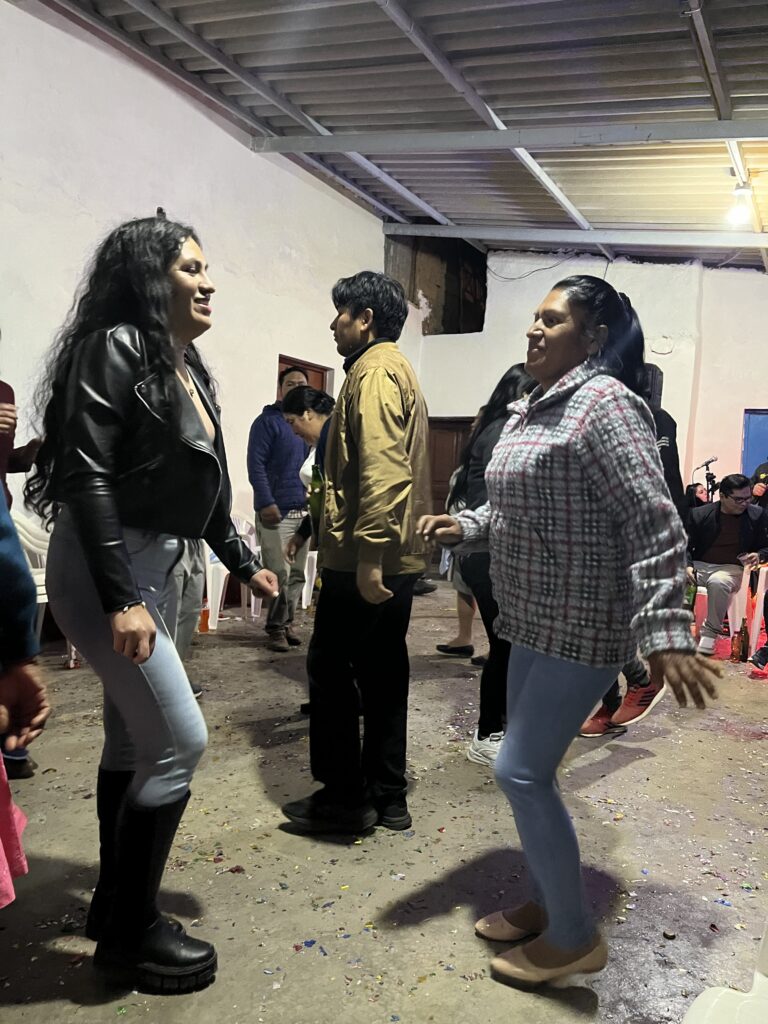
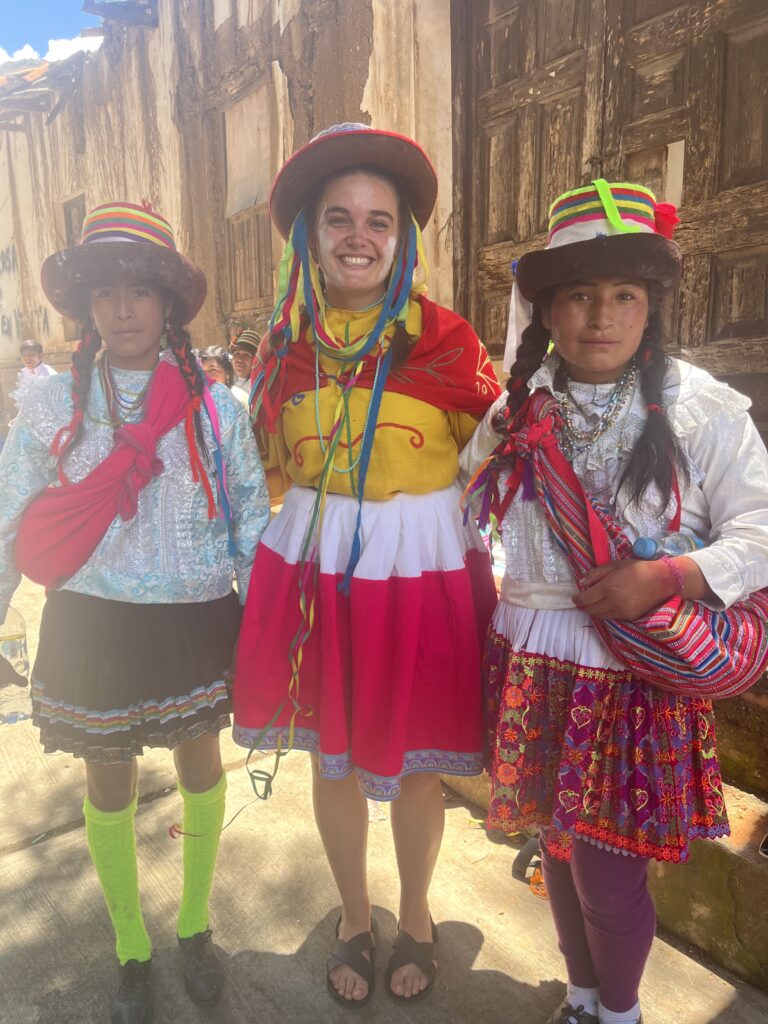
Those first few months in Pueblo Libre, I basically just showed up to the health post each day, and chatted. I showed up to any and every meeting I heard of, with no idea what it was about. The goal was to get to know people, and understand how things operate here. That, the having no idea what was going on, has been the biggest challenge. It’s not the new culture, or the new language, it’s the not having a specific role. While Peace Corps has its objectives (anemia prevention and adolescent health), every community has a different reality – from the processes, to the celebrations, to the schedules, to the resources, to the needs. For example, I now know of the many holidays that continue to surprise me and disrupt my plans – Mother’s Day, Father’s Day, Teacher’s Day, Youth Day, the school’s anniversary – they weren’t just 1-off things; sometimes students practiced a dance or prepared logistics for 2-3 weeks in advance. Sometimes I would come to class ready to teach (and had even communicated as such with the teacher only a couple days prior), to find that when I got there, everyone had different plans. And everyone always seemed to be on the same page … except for me.
In addition to holidays, there are plenty of days that I now know I can use to my advantage next year: Day of Adolescent Health, Day of the Prevention of Violence Against Women, Day of Physical Education. This is one thing I love about Peru. In the US, we may recognize these days with a quick word, but in Peru it’s a whole event consisting of a pasacalle (parade around town), banners, dancing, and participation from everyone from the police to the pre-school. More than a few times, I came to school or the health post to find everyone organizing to commemorate such days. Something that, again, everyone seemed to know about but me.

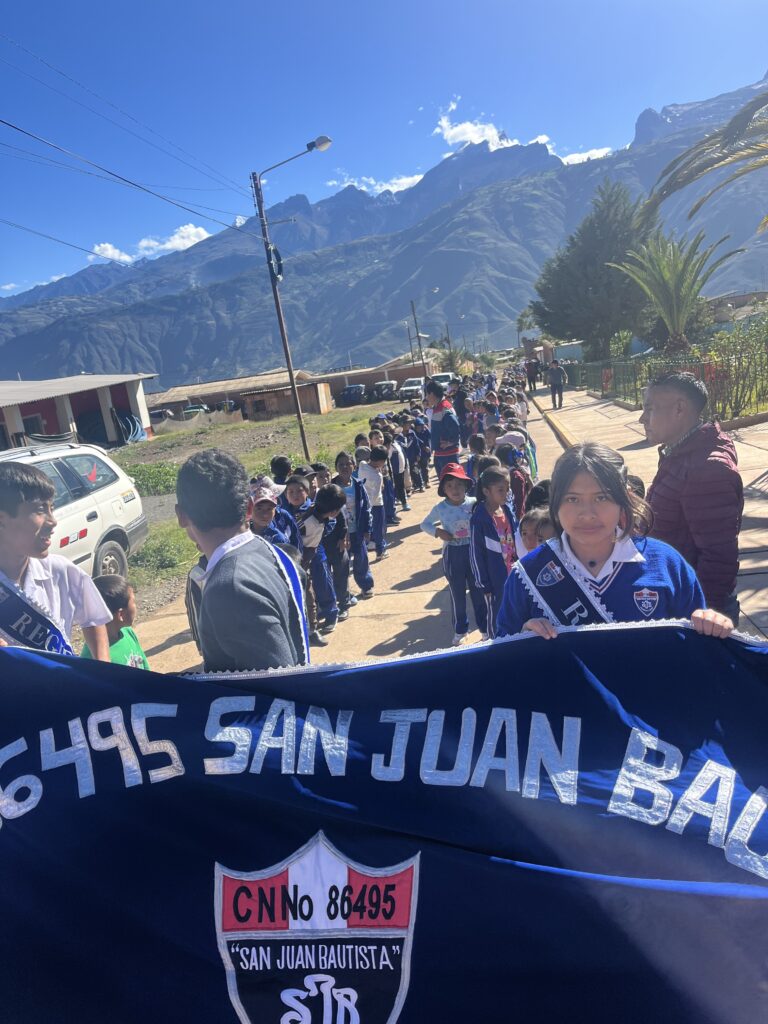
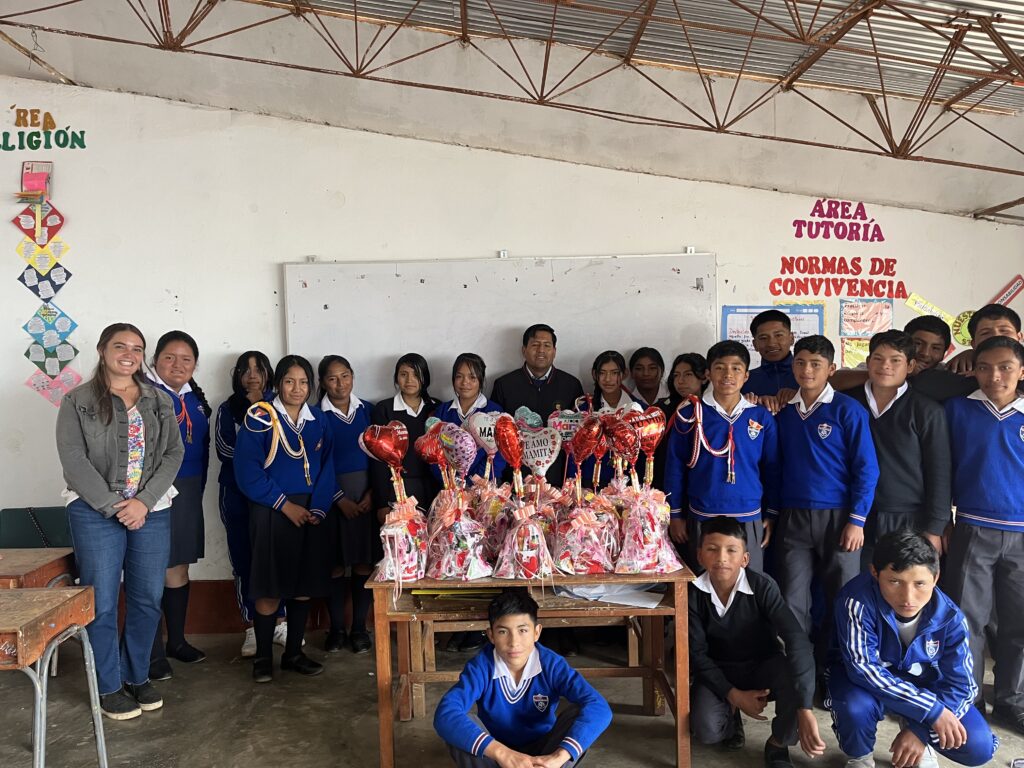
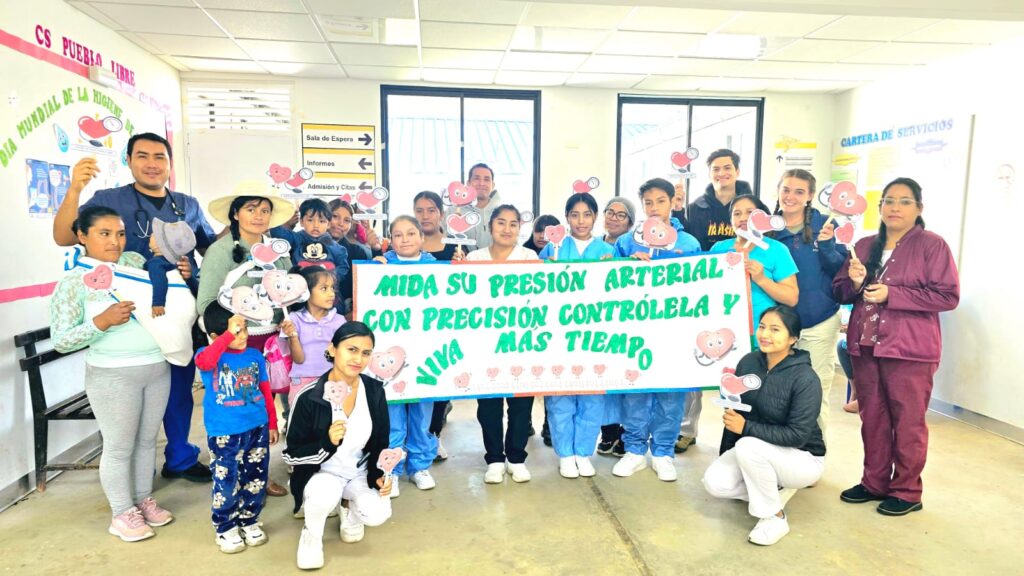
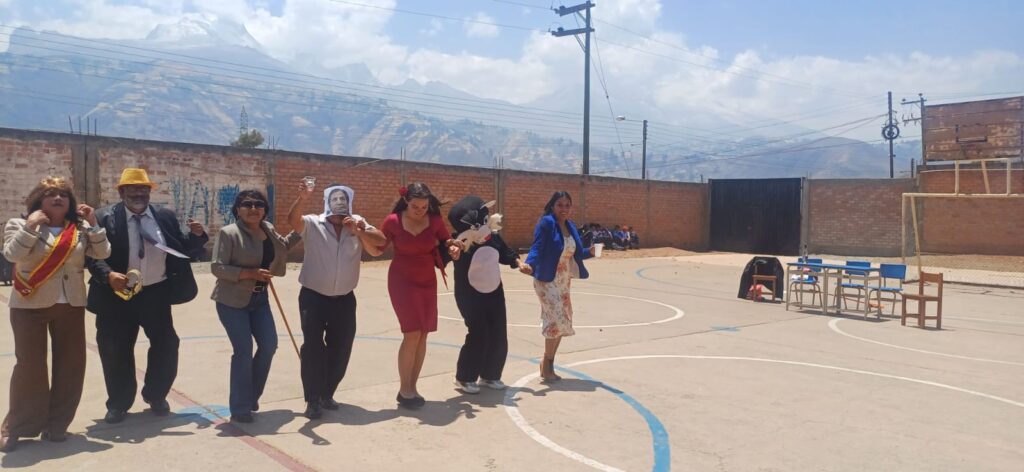
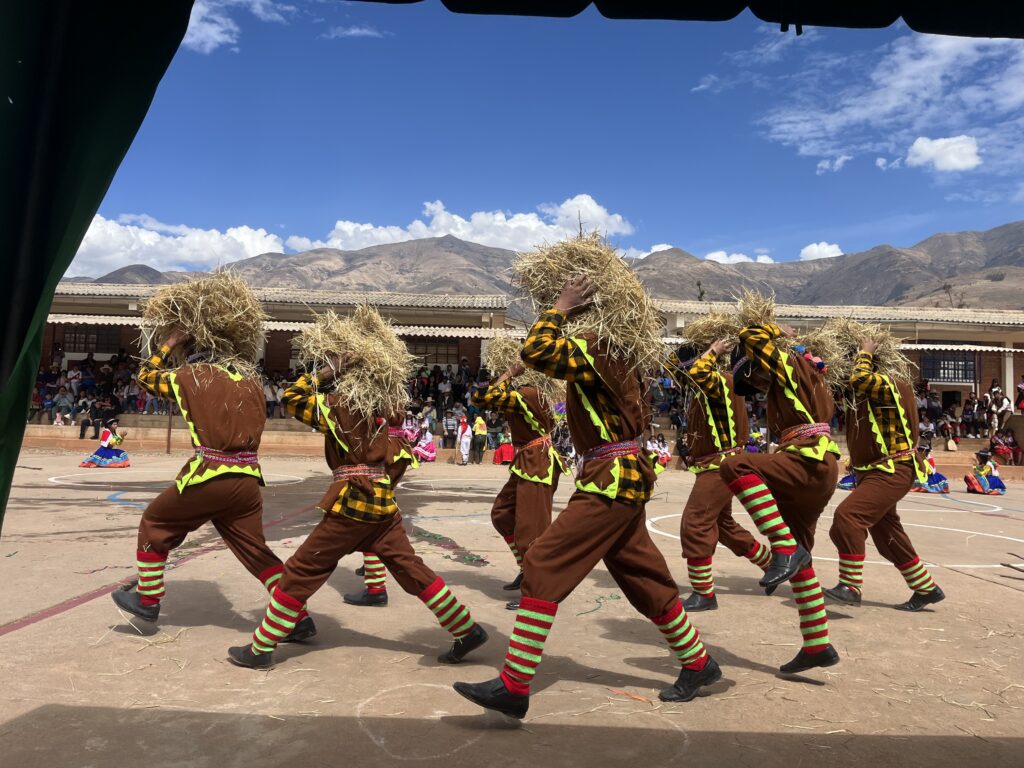
One thing that I am proud of, and look forward to continuing next school year, is my weekly English class with 9-11 year old kids. These kids are my absolute favorite. Never in my life have I been greeted my so much love. Since stability isn’t something I get much of here, I want to work harder next year to implement consistent projects like this one. This year, I had big hopes for an after-school volleyball club, though various unforeseen challenges caused that to fall through:
- For one, most students live far away (we’re talking 30min-2 hours walking). So, staying after school means missing their transportation back home.
- Two, I got push back from the school admin. Concerns about transportation for the kids, liability, etc. It’s something I can overcome, and did overcome when it came to pushback against the after school English club, but not being supported by overhead is a great de-motivator.
- Three, wind. While it may seem like a weird reason, a tornado-like wind rolls through my town every day from 1-4pm. Think the Colorado Chinook winds. It’s something you have to yell over, it takes the ball with it, throws dust in your eyes, and is just all-around uncomfortable.
- Four, when I did get a few girls together to play in the community court after school, many times a group of boys would come and either take over to play soccer, or just dominate the volleyball game. Athletically, girls here are much more timid, and that is truly something I want to work on next year. I need to find a space where the boys won’t infiltrate.
When it comes down to it, I’m just making excuses. And I could make a lot more, but the point is that I have learned of just about all the barriers, which means I will be more prepared to get something up and running next year. Again, the beauty of a 2-year commitment.
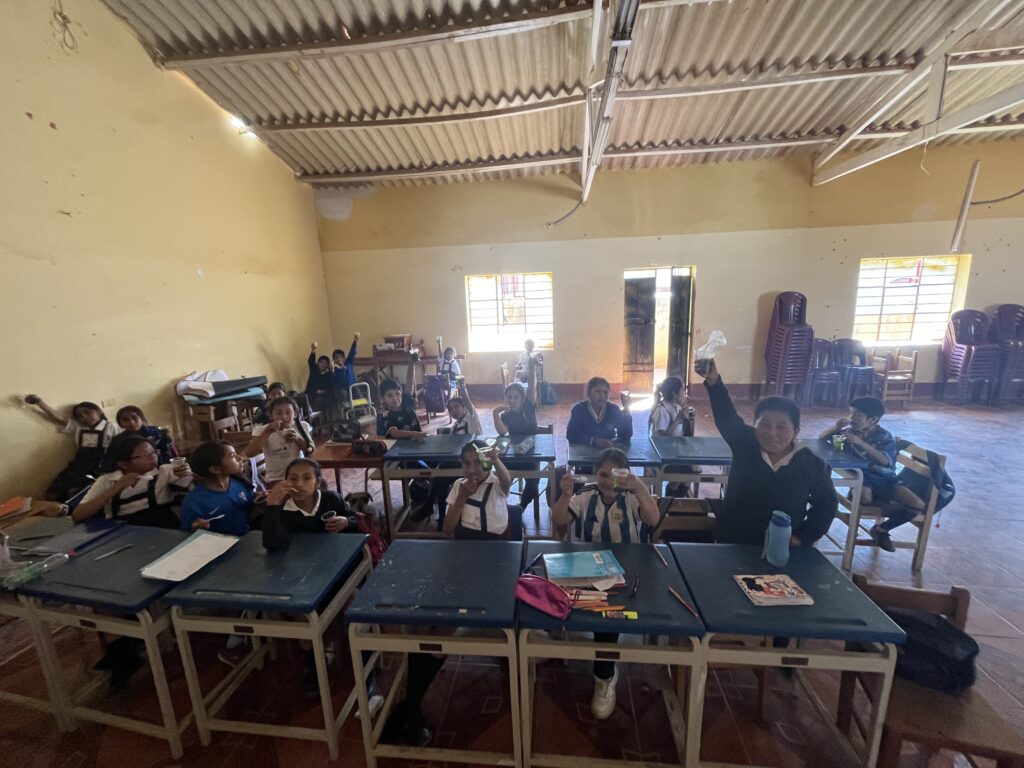
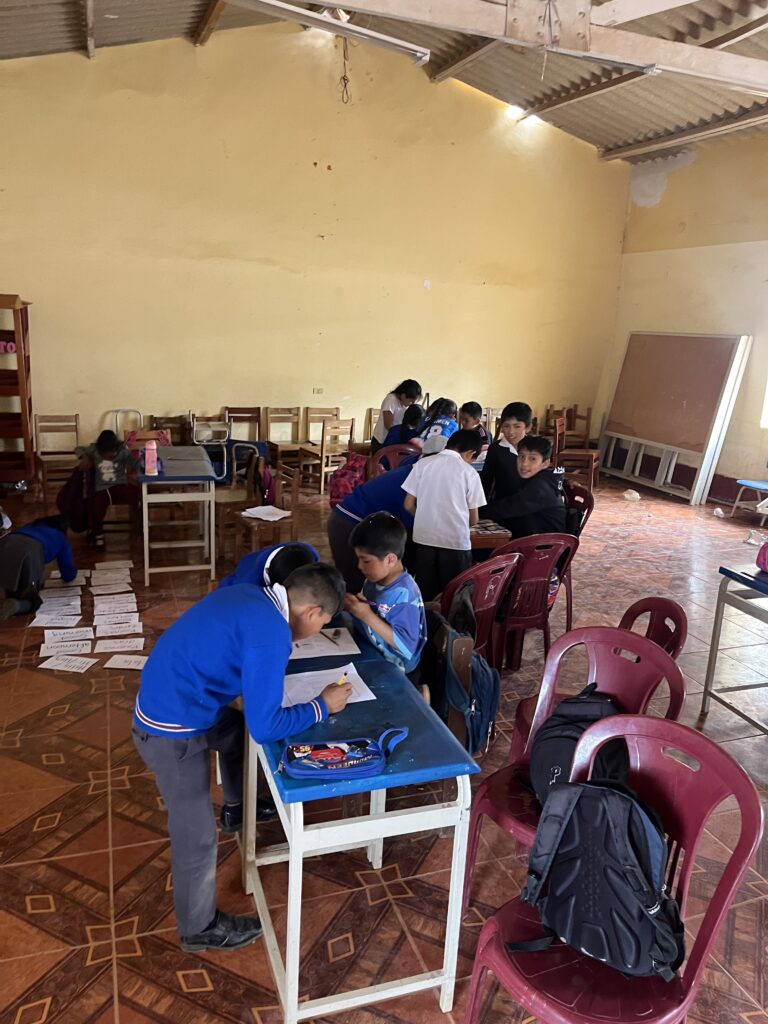
In terms of my adolescent health classes, I had a few streaks of great classes, but overall the whole year was quite disorganized. I came to realize that the teachers are rarely going to reach out to me to collaborate. While I learned this pretty early on, the constant organizing and reminding teachers week after week got to me, and there were weeks at a time that I didn’t have any classes planned. The “tutoría” periods where I teach are completely disorganized during the first month of school, so I couldn’t start consistently going to a class until mid-April. It took me a couple months just hopping around classes until I found a groove … a groove that would only last a few weeks at a time.
Going in, I expected more collaboration from the teachers, but in reality, I am going to need to put in a lot more work if I want to make a space for myself in the classroom. Next year, I plan on presenting myself to the teachers at the very beginning, in a way that sets my goals and the things I offer straight. It’s something that sounds obvious, but was way more intimidating a year ago when a) I didn’t know how the school schedule operated, and b) let’s just say my Spanish-speaking abilities have improved immensely since March. For 2025, the goal is to set a timeline within the first couple months of school, organizing side-by-side with the teachers (which will also be easier now that I know most of them). I’ll also do a better job at asking the students what they want to focus on. I’ll let them pick the topics, each of which I’ll set up a series of sessions that build on one another. Again, consistency is key. Here are a few examples of potential class series:
- Sexual and Reproductive Health
- Gender stereotypes
- Teen pregnancy prevention (including Peruvian/global teen pregnancy stats)
- Birth control options
- STDs
- Healthy vs. Toxic relationships
- Nutrition
- Balanced nutrition, food groups and functions in the body
- Anemia, malnutrition and other diet-related diseases (what they look like in adolescents and how it can affect the rest of your life)
- Healthy plate competition! (bringing in the nutritionist as a judge)
- Alcoholism and other toxic substances
- What is/are alcohol and toxic substances?
- Why do students consume alcohol? (an analysis, getting at mental health, social pressure, family history)
- Physical and mental consequences of alcohol and drugs (diseases, mental health, relationships)
- Strategies to resist peer pressure and alternatives to drinking alcohol, healthier lifestyle choices
- Life Projects (With help from the youth volunteers nearby)
- Identifying strengths and interests
- Discussing career options/opportunities
- Bringing in a professional panel
- Other topics could include:
- Family violence
- Machismo
- Managing stress and emotions (did someone say yoga)
The options could go on, and I also know now that I should start every session with Peruvian/world stats. Make it relevant. Stats of teen pregnancy, alcoholics and drug overdoses, diabetes and hypertension, crime rates and salaries for those that continue education post-high school versus those who don’t. In reality, this is the first time in my life that I’ve ever taught. And it’s dang hard work. Shout out to all the teachers out there, because one lesson plan takes so much preparation, from research, to prepping materials, to coming up with a fun ice breaker. Not to mention, in Spanish. To be honest, teaching these adolescent health sessions is probably the hardest thing I’ve ever done. School was always something that came easy to me, but standing in front of 25+ teenagers in a different language, teaching something so important, afraid to fail these kids, has given me more stress than anything I’ve experienced. It has taught me so much about myself, my strengths and weaknesses and passions. While it is quite hard, I’ve learned that I love the idea of sharing this information with kids, and that it is very important to me that I do it right; that they are interested, and not only understand the topic, but also the importance that it plays in their futures. I think adolescents have so many questions that many times go unanswered. I think I had so many questions back in the day that went unanswered. So, I want to be that answer for them.
As for the big whammy of 2025, that would be my Peace Corps grant. I have officially submitted the grant application, and should hear back (and if all goes well) get funds in January/February, with hopes of getting the ball rolling in March. The idea for the grant is to expand nutrition demonstration sessions outside of the health post, since attendance has been pretty low. Nutrition demonstration sessions are something that the nutritionist does once a month, focusing on what to feed a baby between 6 months and 1 year (post exclusive breast feeding). For context, the district of Pueblo Libre is made up of 36 different communities, 6 health establishments (1 main health center where I work and 5 smaller posts that have anywhere from 2-8 employees). Even for the communities that fall within the jurisdiction of the health center, some women have to walk upwards of 2 hours for an appointment or nutrition session. Cars exist, of course, but it can be impossible to know when one will pass (I have waited upwards of 2 hours before while accompanying a community health worker on house visits).
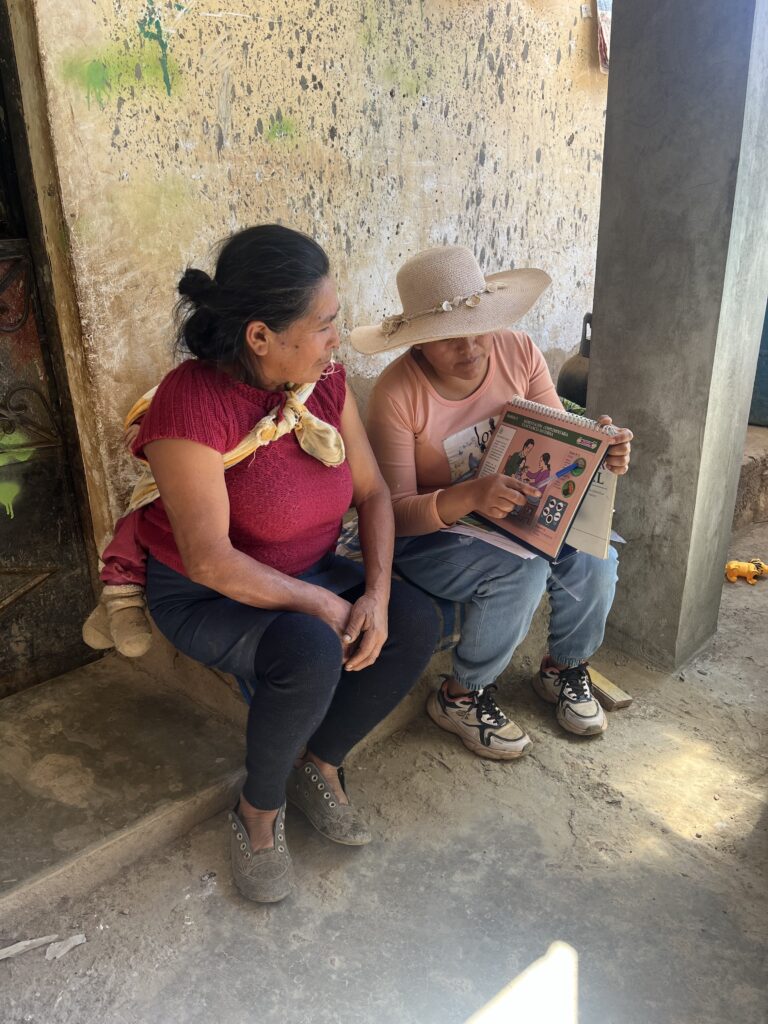
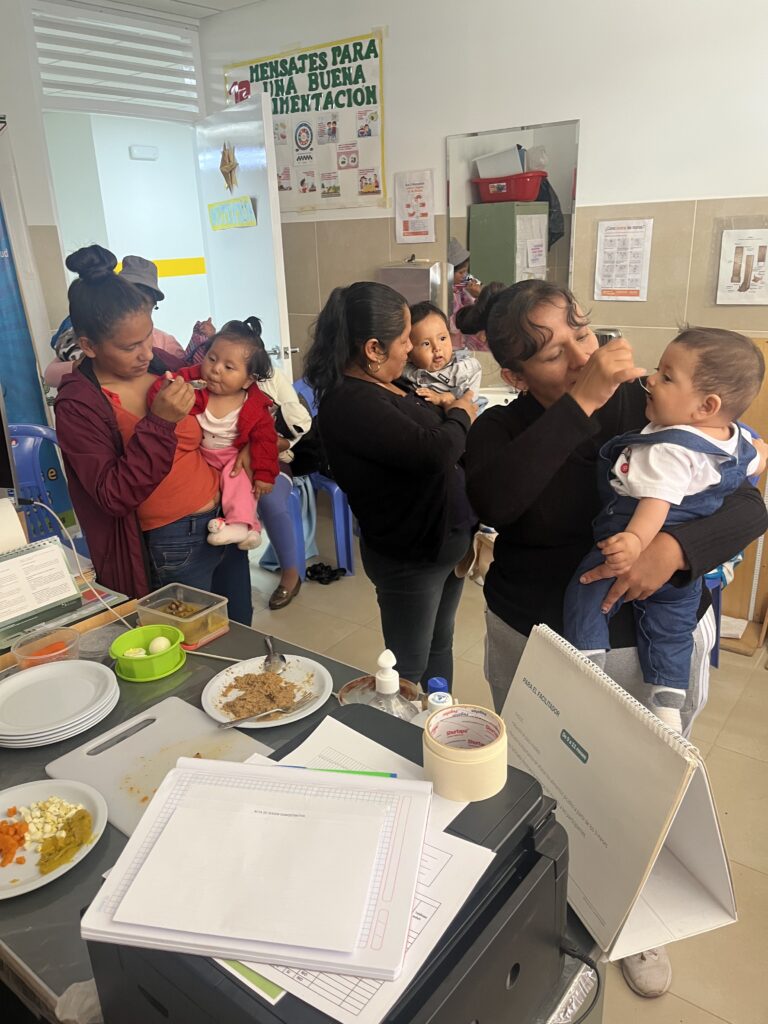
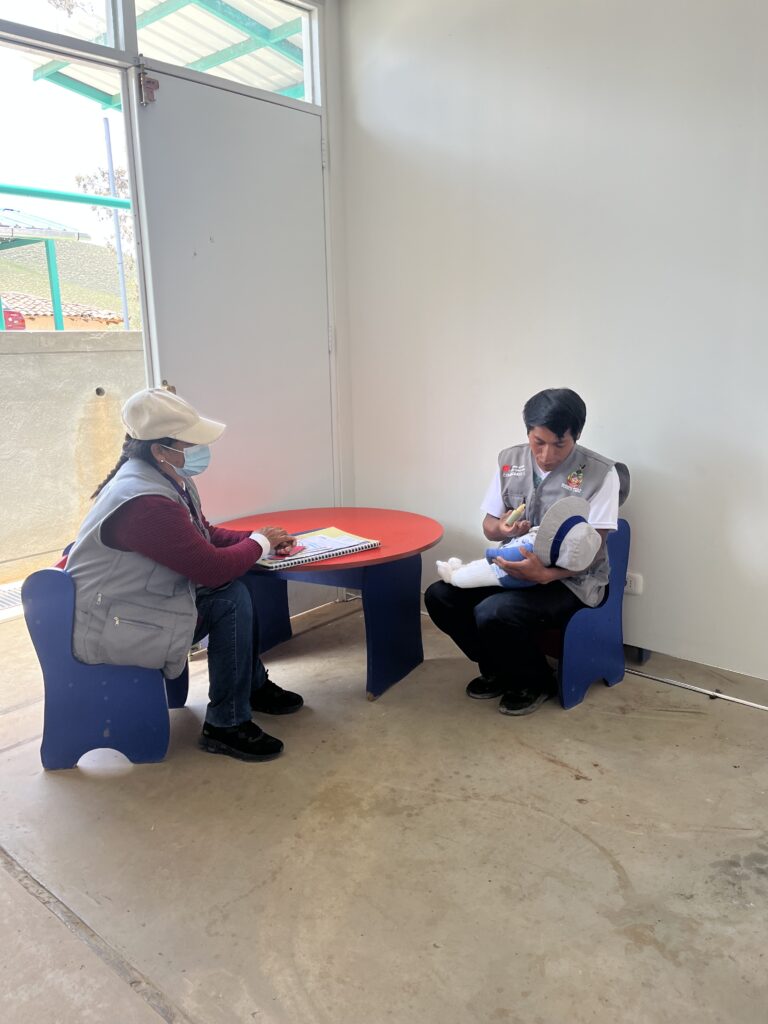
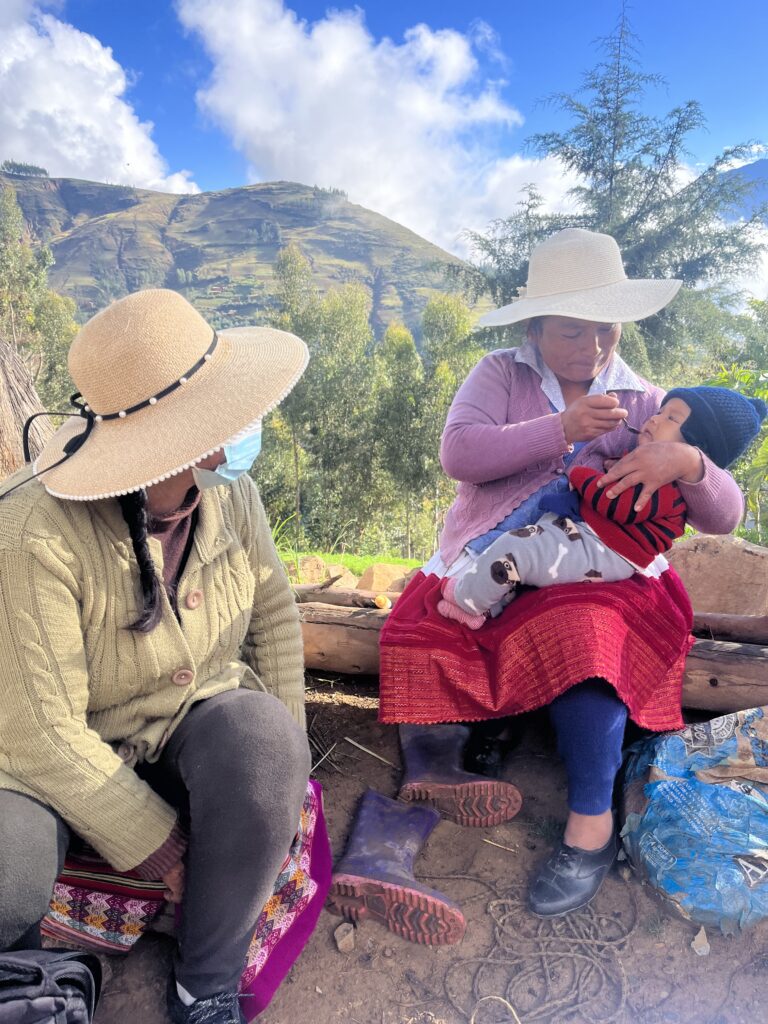
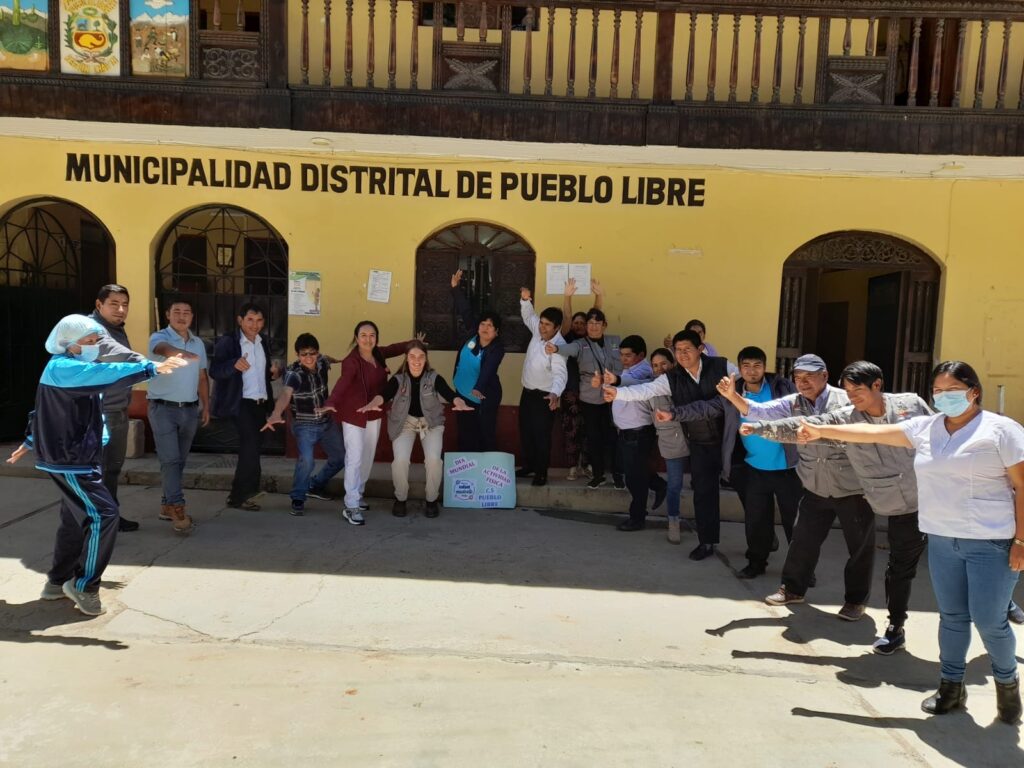
To bring these sessions closer to mothers, the grant will fund a 2-day training for community health workers (a program of volunteers that already exists in the district) to run their own sessions in the communities where they live, in coordination with the health personnel assigned to that same community. If all goes well in the grant, the trained CHWs (could be about 20 of them), will lead 1-2 demonstrative sessions between April and December of 2025. The grant will pay for the training, materials to run sessions, food used in the demonstrations, and transportation for myself or health personnel to accompany/oversee the CHW’s session. I foresee this either being a logistical nightmare, or a great accomplishment … or both.
If you’ve made it this far in my blog, Godspeed. Needless to say, there is plenty to do. Now, it’s off to Lima for 1 week of Mid-Service Training, which is half medical checks (including a stool sample and dental check), followed by a couple days of “best practices” when it comes to implementing sex-ed in schools. The following week, I’m off to Cusco with Kersten!!
4 thoughts on “After 1 year in Ancash, hindsight is 20/20 going into 2025.”
I loved the most recent blog! Your ideas are amazing for what you want to teach the students! I appreciate that you are working hard to make the content relevant to YOUR students!
Best wishes on this next year and let me know via email if you want help creating lesson plans.
Cromer!!! I was literally thinking of YOU when talking about respect for teachers. You were (and I’m sure still are) such an amazing teacher. I strive to have a similar relationship/confidence with my students here. I actually have a “pen pal” idea, where I get a group of kids from here to write with a group of kids in the US. I just need a US-based teacher to do so with. Let me know if you’d be interested!!!
Again, another great post. Your readers can really see your growth as a volunteer over this past year. So much of your daily life seems to be familiar and normal to you now. Do you ever miss the thrill of the newness (is that even a word) to life from when you first arrived? Thank you for the examples of your lesson ideas. I was wondering what your pc job actually entailed. Apparently, a lot more than I realized. I’m also looking forward to hearing about the successful outcome in the month to come to you grant project. Please update us once it is established.
BTW: Claire left 3 days ago to head back to Rwanda. She was home for exactly 2 months. I’m so happy so is headed “home”. She really missed it. Fortunately, she was in her site just long enough (1 month) to know what she wanted to take back with her on the return trip. 3 full suitcases of food. Apparently Rwanda isn’t know for it culinary delights. Potatoes or plantains at every meal. She was excited to be able to teach her host family during training how to cook plantains Panamanian style (learned from her months at a time stays in Panama – her boyfriend lives in Panama), they were thrilled to learn a new technique. You would think that everyone would cook plantains the same way, but apparently not.
During this evacation period she did go on a trip to Yosemite and Lake Tahoe with some of the members of her cohort. They almost went on another excersion to Mexico, but thankfully, PC finally called them back. Now they are planning their Christmas safari. As her parent and bystander, I feel as though she has been on one long vacation these past 6 months. YOLO.
Hi Holly, thanks for the message! Honestly, while a part of me does miss some of the thrill of “newness”, I’m overall thankful to feel more normal. While the thrill has faded, I feel more and more like this is my normal life, which is way more sustainable than never expecting what is coming next, or always saying yes to food because it is something new.
That’s great that Claire is back in Rwanda! I’m sure she is very excited, and hope everything can start back up smoothly, and that it eventually feels like she never left. And, it sounds like she’s made some great friends in her cohort!!